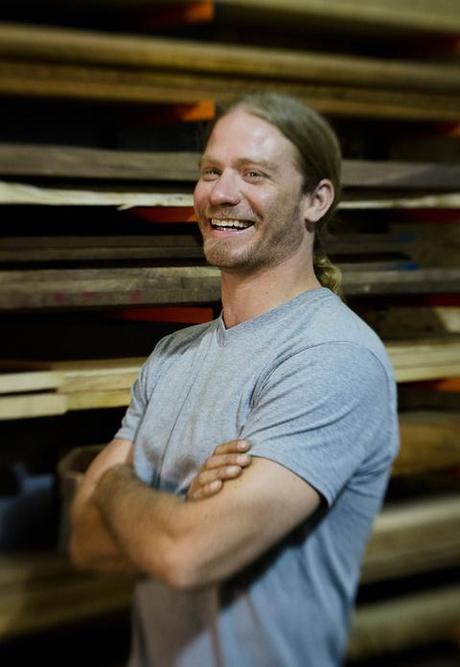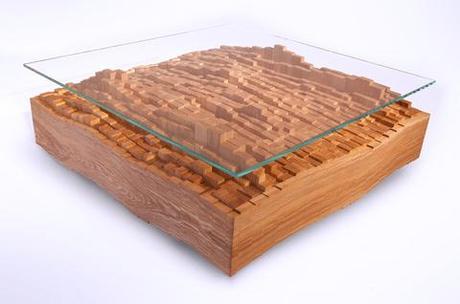
Besides being shown the basics of woodworking by his father as a child, Michael Rupich is completely self taught, mostly through a process of trial and error. “It's a tough way to learn, but you never forget something once you figure it out,” he says. “I am still learning every day, though, and any time I have the chance to talk the ear off an old-timer, I will jump on it.” Photo by: Esther Nisanova.
Rupich’s work is complex but carries a handmade feel, which gives his pieces a unique quality that is quite striking. “You can't achieve these uniform details and complete randomness by just running a computer program on a CNC machine,” he says. “This very precise, yet organic quality is what I like to think sets my work apart.”
Rupich, who first became interested in woodworking at age seven, when he had to build his own skateboard ramps, is largely self-taught. His father showed him a few basics, but otherwise it has all been a process of trial and error. “It's a tough way to learn, but you never forget something once you figure it out,” he says. “I am still learning every day, though, and any time I have the chance to talk the ear off an old-timer, I will jump on it.”
All EndGrain pieces are custom-made and one-of-a-kind, simply because it would not be possible to produce them on a large scale. Some of his pieces involve cutting apart and carefully re-assembling the wood, piece by piece, in the exact order of the original grain. This highly time-consuming technique was born of his passion and high regard for process as an integral part of the work.
Slideshow
The Skyline Coffee Table, here shown in ash hardwood with glass, is a graphic interpretation of New York City, a place where Michael Rupich—whose studio is currently based in Fairfield, New Jersey—has always lived in and around.
Rupich, who often works with reclaimed wood, pays close attention to the material’s inherent organic qualities and quirks. “There are plenty of challenges working with salvaged and reclaimed lumber, but the benefits far outweigh those problems,” says Michael Rupich. “The wood is so beautiful and has so much character—each board has a story to it. I love being able to take something that is so old and worn and reuse it to create something modern and contemporary, it's a beautiful blend of past and present.”
While many EndGrain pieces allude to pixels and the digital space, nature, especially round organic shapes, is also a main source of inspiration for Michael Rupich. “We like to say that all that comes out of this shop is rocks and blocks,” he says. “It's very therapeutic for me to be able to go from one style to the other and, as different as they are in execution, they both rely on looking at wood in a different way to create unique forms. One of these techniques is represented in a very natural way, the other in a very artificial way.”
The power of EndGrain’s pieces lie precisely in the tension and contrast created by those seemingly opposite ideas—living in perfect, symbiotic unity.
